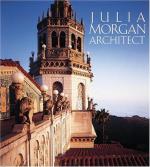|
This section contains 380 words (approx. 2 pages at 300 words per page) |
American Architect 1872–1957
Julia Morgan, America's first prominent women architect, was the second of five children born to Charles and Parmelee Morgan on January 20, 1872, in San Francisco, California. Morgan pursued an interest in architecture, and was one of the first women to graduate from the college of engineering at the University of California at Berkeley in 1894. On the advice of her professor, architect Bernard Maybeck, Morgan went to Paris and became the first woman to be accepted into the architecture department at the Ecole des Beaux-Arts, a respected school of fine arts in France. In 1902, she also became the first woman to be granted the Ecole des Beaux-Arts certificate.
Following her studies in France, Morgan returned to the United States and was the first woman to be a licensed architect in California. She worked for John Galen Howard on two Berkeley structures—the Hearst Mining Building (1901–1907) and the Greek Theater (1903). Morgan was also recognized for her design and use of reinforced concrete to build the El Campanil Bell Tower (1903–1904) and the Margaret Carnegie Library (1905–1906) at Mills College in Oakland, California. She gained further recognition with the reconstruction of San Francisco's Grand Fairmont Hotel after the fire of 1906. In 1907, she established her own practice in the Merchants Exchange Building in San Francisco.
 Julie Morgan designed San Simeon, the lavish residence of William Randolph Hearst. Referred to as the Hearst Castle, the residence quickly became a masterpiece of American architecture, and remains a famous tourist attraction.
Julie Morgan designed San Simeon, the lavish residence of William Randolph Hearst. Referred to as the Hearst Castle, the residence quickly became a masterpiece of American architecture, and remains a famous tourist attraction.
In 1919, Morgan was hired by newspaper tycoon William Randolph Hearst to design his ranch, San Simeon, in central California (1920–1939). On her retirement in 1951, Morgan destroyed most of her blueprints and drawings, resulting in the architectural anonymity of many of the buildings she designed and constructed. Throughout her forty-seven-year career, she is noted as having said, "My buildings will be my legacy … they will speak for me long after I'm gone." She lived privately in San Francisco until her death on February 2, 1957.
See Also
Bibliography
Kastner, Victoria, and Victoria Garagliano. Hearst Castle: The Biography of a Country House. New York: H.N. Abrams, 2000.
Wadsworth, Ginger. Julia Morgan: Architect of Dreams. Minnesota: Lerner Publications Company, 1990.
Internet Resources
KQED Center for Education and Lifelong Learning. Julia Morgan Engineering Program (JMEP) at the University of California at Berkeley. <http://www.coe.berkeley.edu/cue s/morgan.html>.
|
This section contains 380 words (approx. 2 pages at 300 words per page) |


